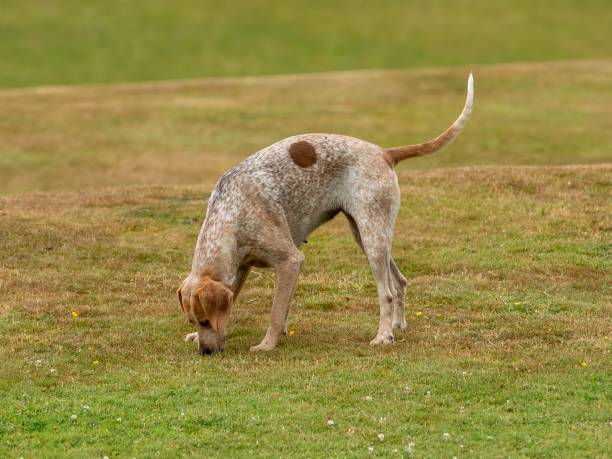American English Coonhound

Breed History:
The English Coonhound, also known as the American English Coonhound, is a versatile scent hound developed in the United States in the 18th century. It descends from English Foxhounds brought by early settlers, bred specifically to hunt raccoons and foxes in rugged American terrain.
This breed was originally grouped with other coonhounds but gained individual recognition for its speed, hunting style, and distinctive voice. Known for treeing raccoons, it’s a popular choice among hunters across the Southern U.S. The UKC recognised the breed in 1905, and the AKC followed in 2011.
|
Gender |
Height |
Weight |
|
Male |
56-69 cm |
25-36 kg |
|
Female |
53-64 cm |
20-32 kg |
Size: Medium to Large
Life Expectancy: 10–12 years

Breed Appearance:
The English Coonhound is a sleek, muscular dog with long legs, a deep chest, and a streamlined, athletic build. It has a broad head, long, drooping ears, and dark, expressive eyes.
Its short, hard coat comes in a variety of colour patterns, most notably the redtick colouration—white with red ticking or speckles. Other variations include bluetick, tricolour, and black and white.
Breed Type – Scent Hound:
As a classic scent hound, the English Coonhound is known for its keen nose, stamina, and powerful voice when tracking game. It’s a natural hunter, bred to work in packs and trail game for miles.
At home, it is friendly, sociable, and gentle, though its energy and vocal nature mean it’s best suited to active homes with space and structure.

Training:
Training an English Coonhound requires consistency and patience. They are intelligent but often independent and scent-focused, which can make recall challenging.
Early socialisation and basic obedience are essential. They respond best to positive reinforcement and enjoy learning when motivated by food or praise. They can be sensitive and do not respond well to harsh discipline.
Health & Care:
A generally healthy breed, though some issues may include:
-
Hip dysplasia
-
Ear infections (due to floppy ears)
-
Bloat (gastric torsion)
-
Eye conditions like entropion
Routine care, including ear cleaning, a nutritious diet, and moderate vet checkups, helps prevent common health problems.

Living Conditions:
The English Coonhound does best in rural or suburban homes where it has room to roam. It’s not ideal for apartment living due to its size, bark, and energy levels.
It thrives in environments where it can exercise freely, work, or play. The breed typically does well with children and other dogs but may chase smaller animals if not properly trained.
Exercise:
This breed is high-energy and athletic, requiring at least 1–2 hours of daily exercise. Ideal activities include:
-
Long, brisk walks or jogs
-
Hiking or scent-tracking games
-
Hunting or field work
-
Playtime in a secure, open area
Mental stimulation is key—without it, the dog can become bored and vocal.
Grooming:
Grooming needs are minimal:
-
Weekly brushing keeps the coat clean
-
Regular ear cleaning to prevent infections
-
Occasional baths as needed
-
Routine nail trimming and dental care
This breed sheds moderately and has a slight hound odour, especially when active outdoors.

Advantages:
-
Excellent hunting and scent-tracking ability
-
Loyal, affectionate, and people-friendly
-
Low grooming requirements
-
Athletic and agile
-
Versatile in work and companion roles
-
Gets along well with children and other dogs
Disadvantages:
-
Very vocal—bays and howls loudly
-
Needs extensive exercise and space
-
Can be stubborn and hard to recall off-leash
-
Prey drive may be high with small animals
-
Not suited for apartment or inactive lifestyles
-
Requires patient, consistent training

